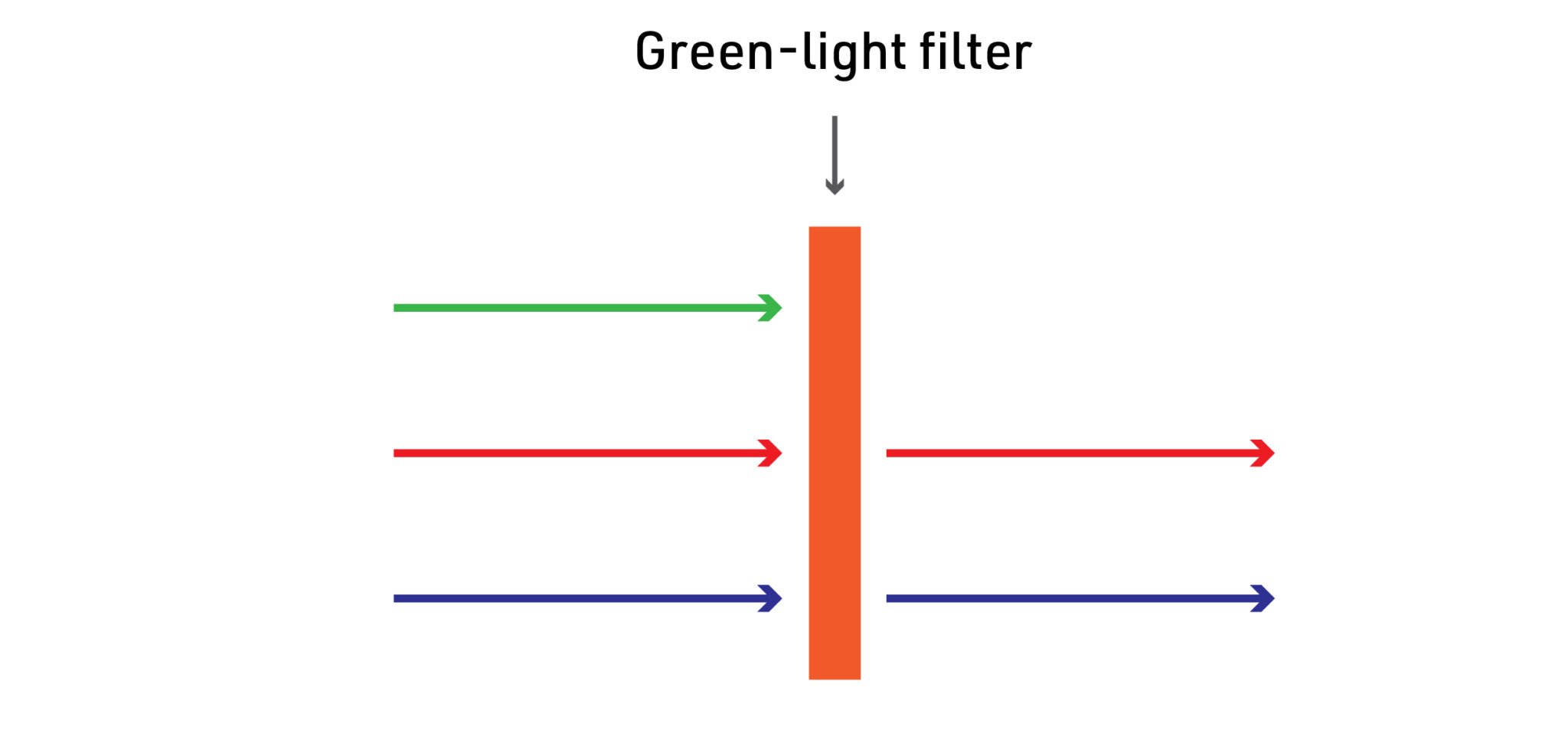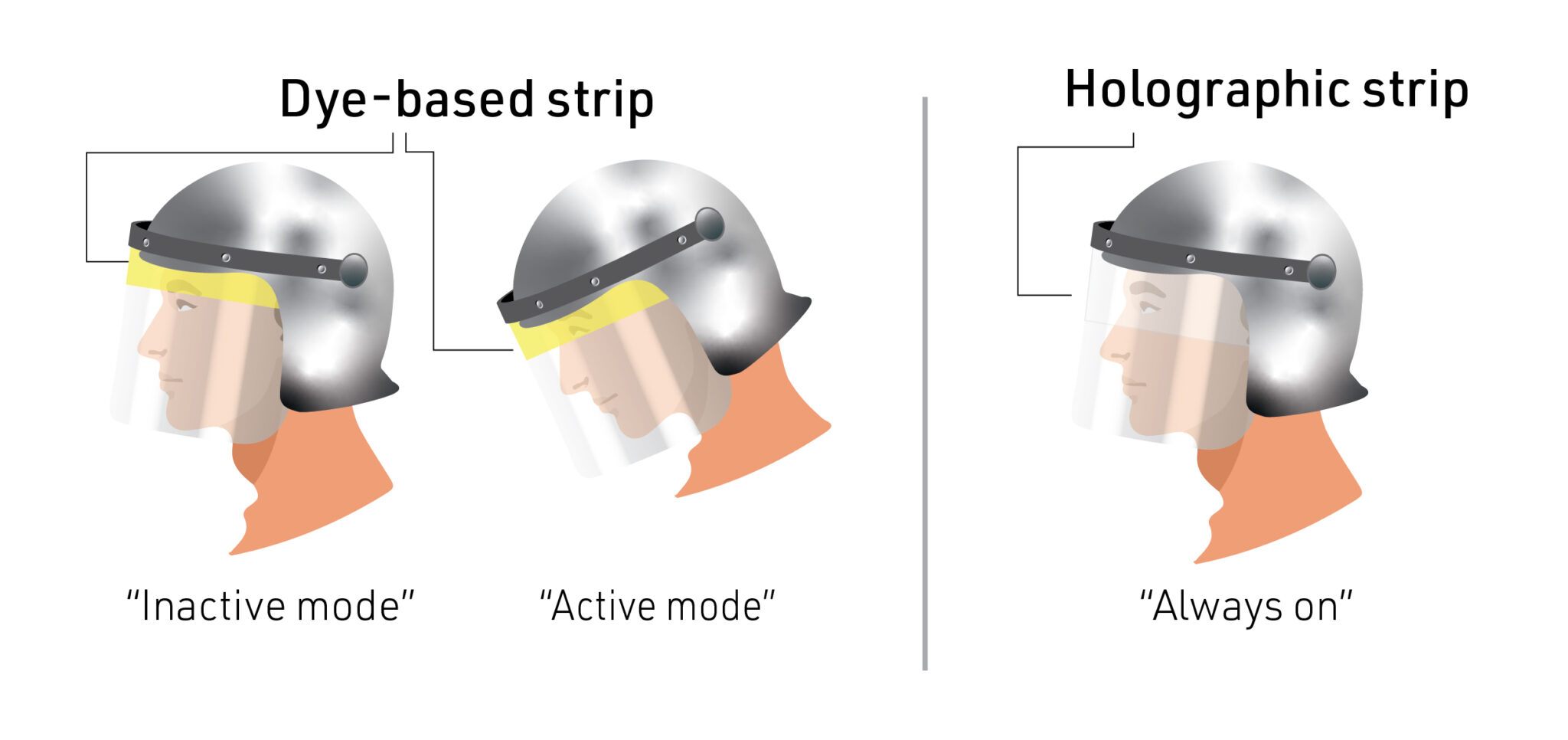Part 2 – An Introduction To Laser Glare Protection Solutions
Laser glare protection gear typically includes goggles, visors, shields etc. These types of equipment have filters that selectively block certain wavelengths of light. The color of a given light depends on its wavelength. Green light has a wavelength ranging from 490 to 570 nanometers (nm), while red light falls in the wavelength range of 620–780 nm. Manufacturers of laser filters typically provide information on laser beams that their filters can block in wavelengths or wavelength ranges.
Laser glare protection – What is it, and why should your team have it, was covered in Part 1 of our blog series. Let us dive into laser glare protection solutions for law enforcement officials. To shield your team of tactical or police officers from laser strikes, you may want to consider equipping them with appropriate laser glare protection gear.
Types of Light Filters
It is important to note that a laser filter is only able to block light beams of the specific color it is designed to block. For example, a green-light filter can only block green beams and is ineffective at filtering out beams of any other colors like red and blue. That is, red and blue light beams will pass right through a green-light filter.

Because the human eye is innately most sensitive to green light, green light appears much brighter than red light with the same power. This explains why green laser pointers can produce the most dramatic startling and distracting effect on law enforcement officers at night and why laser-filter makers treat green laser beams as the primary target. (Most consumer green laser pointers produce green light beams at a wavelength of 532 nm.)
Legacy Solutions
- Low transparency is an inherent problem associated with legacy dye-based filters, particularly those offering protection from multiple colors, or wavelengths, of light.
- Bear in mind that there is a trade-off between transparency and protection: the clearer the filter, the less effective it is at blocking light, and vice versa.
- Because the dye-based laser protection solution can severely lower visibility, manufacturers recommend installing their dye-based strip onto a clear face shield slightly above the wearer’s line of sight. This way, the wearer can see through the face shield when there is no danger. Under a laser strike, the wearer dips their head down to place the strip directly in front of their eyes to block the laser beam
- This approach may be problematic for law enforcement officers, especially in low-light settings. First, action is required from the officer. The officer needs to purposely adjust their head position. Second, once the officer drops their head down and hides their eyes behind the strip, they will lose much visibility, which will compromise their operational competence and subject them to lurking dangers.

Holographic Filters for Law Enforcement Officials
Holographic optical filters or holographic laser protective films are an attractive alternative to dye-based filters, offering crucial benefits to ground law enforcement officers. Unlike the dye-based solution that works by absorbing light, holography-based filter technology provides protection from laser strikes by selectively reflecting light.
- The most remarkable advantage of these holographic filters over their dye-based counterparts is their high transparency. This feature allows law enforcement officers to have a clear view of their surroundings and helps them identify potential threats.
- Like the dye-based solution, holographic filters can also be manufactured in two forms: eyewear and self-adhesive, pliable strips. The strip form allows these filters to be easily applied to the surface of many types of protective equipment like helmet visors and face shields.
- Because of its high transparency, a holographic strip can be installed onto a face shield flush with the wearer’s eyes without significantly reducing their visibility. This means that a holographic strip doesn’t require any action from the wearer for “activation” and can continuously protect them from laser strikes. This “always-on” benefit can help law enforcement officers confront perpetrators head-on. The illustration below shows a holographic strip and a dye-based strip, each installed on a clear visor.
When it comes to the ability to block laser light (measured in optical density), holographic filters are comparable to dye-based filters. One area where dye-based filters outperform holographic filters is angular coverage. Due to its structure, a holographic filter can only block laser beams coming from certain angles, generally within the central field of view. This limitation, however, may be mitigated by movement.
Holographic filters like metaAIR® offer laser glare protection without compromising law enforcement officers’ operational capabilities. They can be an extremely valuable addition to your arsenal of protective equipment. metaAIR® for Law Enforcement is a flexible holographic optical filter offering best-in-class laser glare protection from laser strikes. The unique holographic nanomaterial, built on a flexible polymer film, is compatible with transparent ballistic shields and lenses to block green laser light emissions by reflecting the light. Compared to dye-based lenses on the market, these films deliver exceptional color recognition, superior visible light transmission, and optical filtering.
metaAIR® for Law Enforcement is available in the form of flexible film sheets, pre-cut to a desired shape and size and including a self-adhesive application for flat and single-curved (cylindrical) surfaces.
For more information about holographic laser glare protection strips, or to request samples, please click here:

